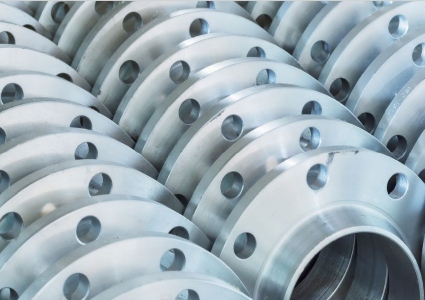
Pipe flanges are used in a variety of industrial applications, such as oil and gas, water, and chemical processing. They are used to join two or more pipes together or to connect a pipe to a valve or other piece of equipment. Flanges come in a variety of shapes and sizes, with different materials and features, depending on the application. This article will discuss the different types of pipe flanges, their features, and their uses. Click https://www.znsteelflange.com/product-category/pipe-flanges/ to learn more about pipe flange……
Weld neck flanges are the most common type of flange used in most applications, as they are the most versatile and have the highest pressure rating. They are usually made of forged steel or cast steel and can be welded or threaded to the pipe. The weld neck flange has a tapered hub and a raised face, which provides additional strength and a better seal.
Slip-on flanges are similar to weld neck flanges but are easier to install. They are usually made from cast steel and have a flat face. The slip-on flange has two holes for bolting to the pipe and provides a good seal under low pressure.
Socket weld flanges are used in applications that require higher pressure ratings. They are made from forged steel and are fitted with a socket for welding to the pipe. Socket weld flanges usually have a raised face and are used in high-temperature and high-pressure applications.
Blind flanges are used to close off the end of a pipe or valve. They are usually made from forged steel and have no holes or openings. Blind flanges can be used to isolate a section of pipe, prevent leaks, and provide a pressure seal.
Lap joint flanges are similar to slip-on flanges but have a smaller diameter. They are typically used in applications that require a tight fit and a good seal. Lap joint flanges are used in applications that require pressure-tight seals and are usually made from stainless steel.
Threaded flanges are used in applications that require a threaded connection. They are usually made from stainless steel and have a threaded hole for connecting to the pipe. Threaded flanges are used in applications that require a tight seal and are usually made from stainless steel.
Orifice flanges are used in applications that require precise measurements of fluid flow. They are usually made from stainless steel and have an orifice plate with a hole. Orifice flanges are used to measure the flow of liquids or gases and are often used in the chemical and oil and gas industries.
Spectacle blind flanges are used to block off a section of a pipeline or valve. They are usually made from stainless steel and have two discs that can be removed independently. Spectacle blind flanges are used in applications that require a secure seal and are usually made from stainless steel.





